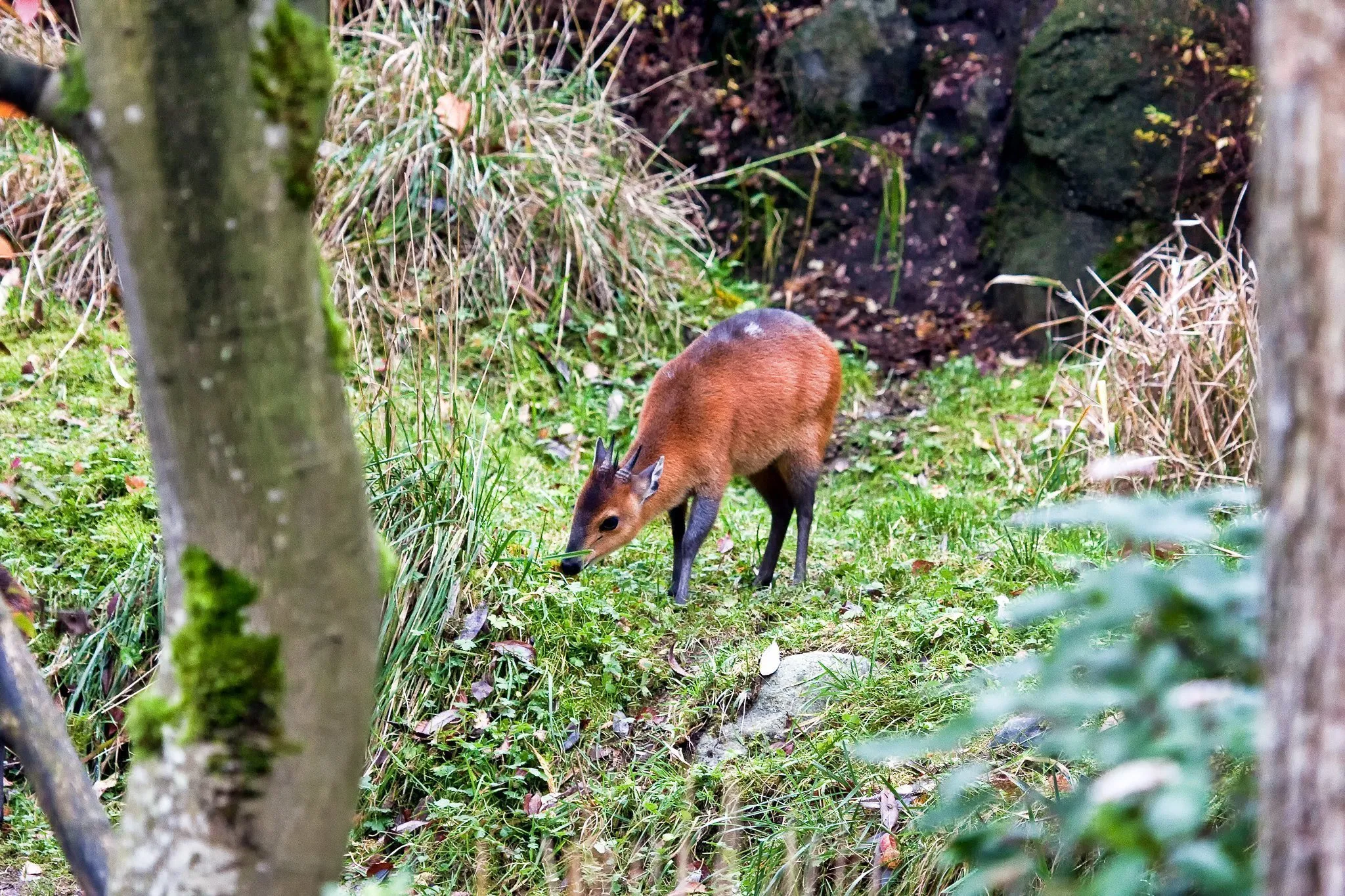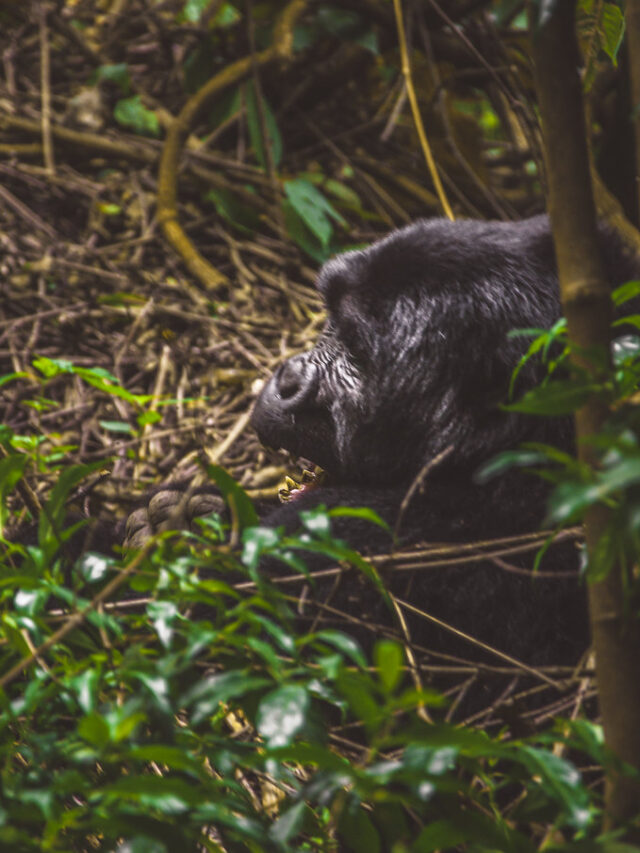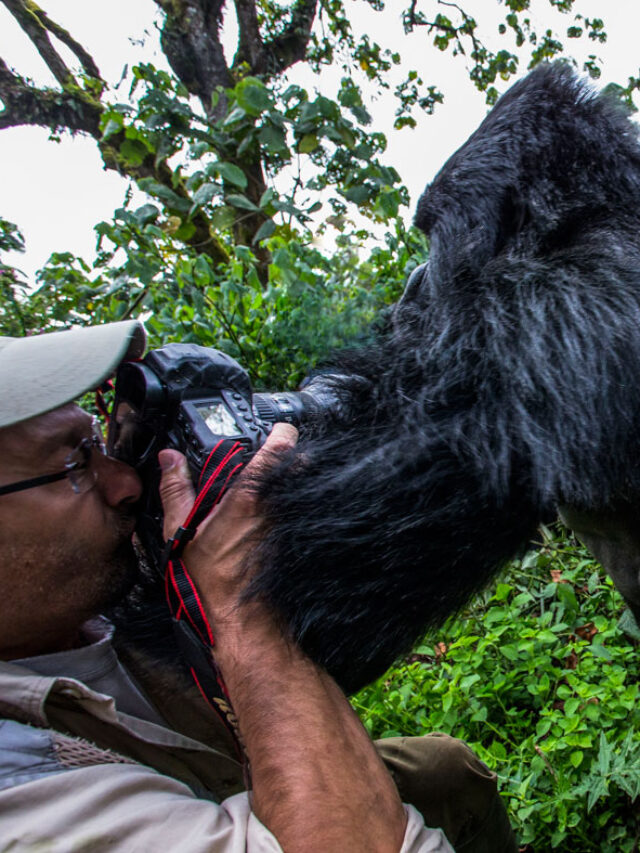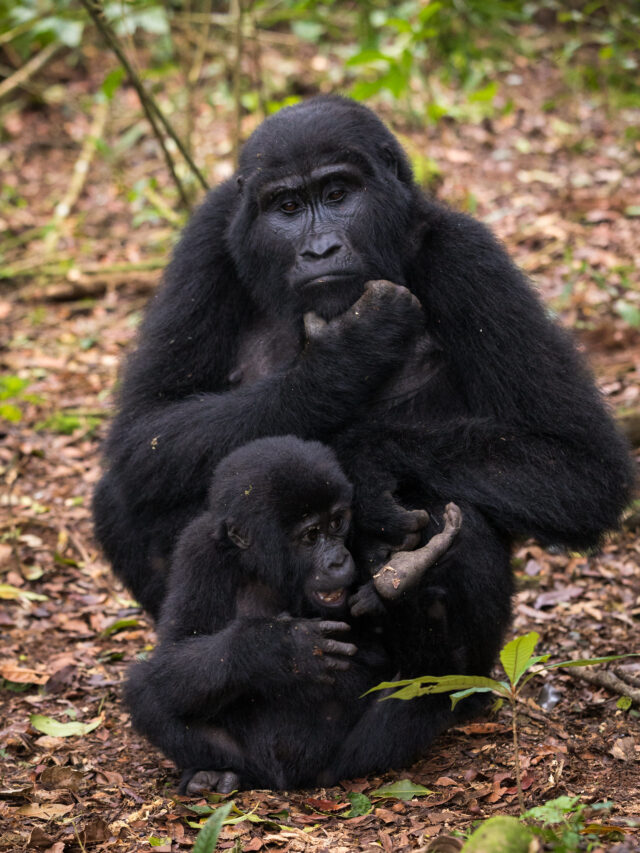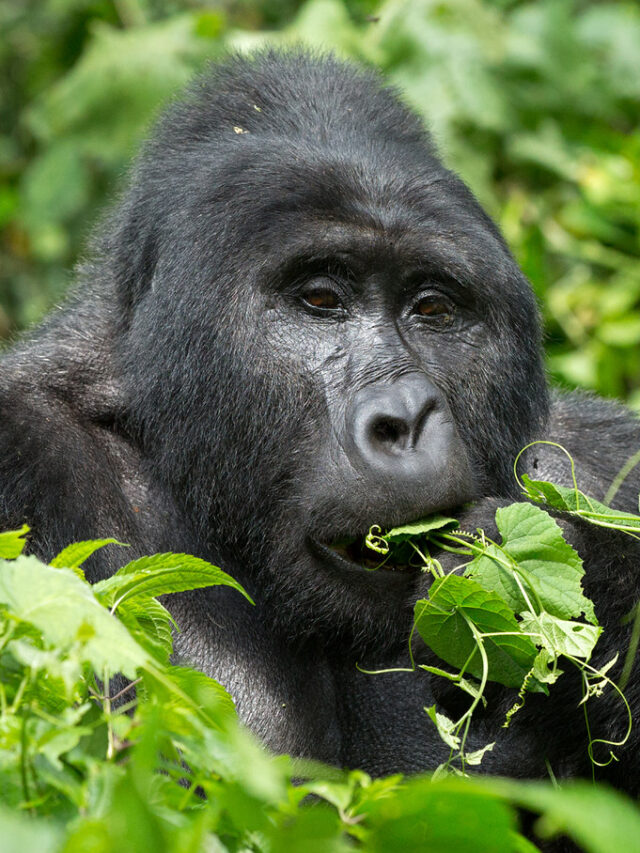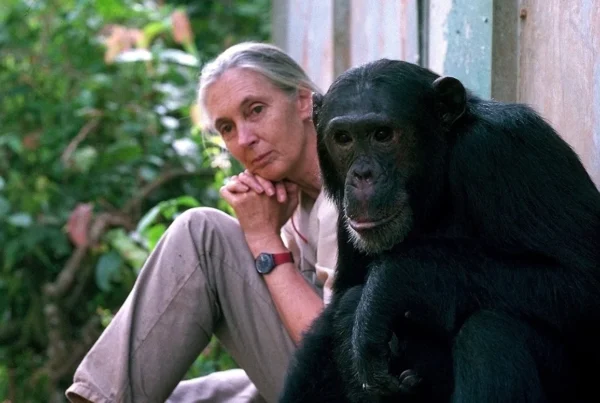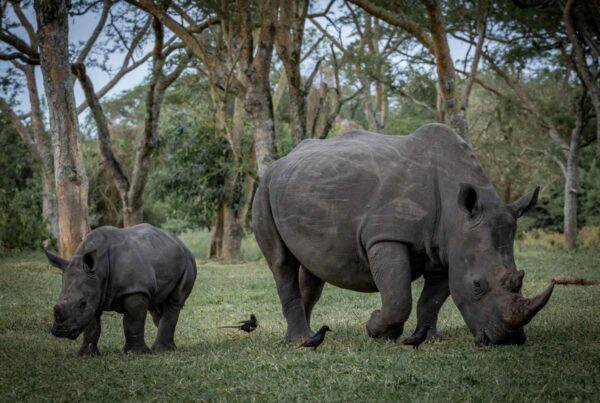The Vanished Spirit of Bwindi: What Happened to the White-Bellied Duiker?
A Shadow in the Mist That’s No Longer There
Bwindi Impenetrable Forest, world-famous for its endangered mountain gorillas, is a mosaic of ancient biodiversity. It’s a place where clouds cling to treetops, where every footstep crunches over centuries-old leaf litter, and where life hums in the stillness. But beyond the gorillas, chimpanzees, and rare birds, there once lived another secretive resident — one now largely forgotten: the white-bellied duiker (Cephalophus leucogaster).
What Happened to the White-Bellied Duiker? — This small, shy antelope, with its rich chestnut coat and distinct pale underbelly, was once a quiet part of Bwindi’s understory. Unlike the bold forest elephants or the commanding silverbacks, the white-bellied duiker lived in near-complete silence, weaving in and out of thick vegetation, mostly unseen by human eyes. Today, however, it is believed to be extinct or no longer resident in Bwindi, a victim of ecological changes that crept up quietly and left no headline behind.
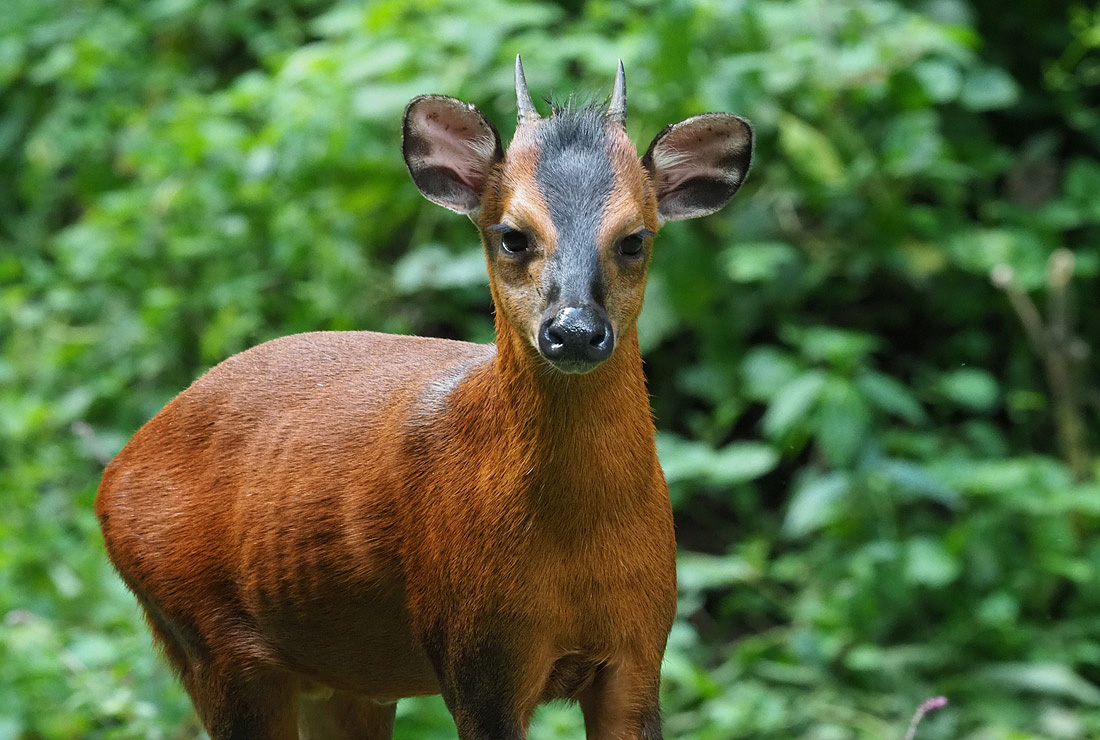
When It Roamed: Historical Presence in Bwindi
Though not commonly sighted, historical mammal surveys and early wildlife reports suggest that white-bellied duikers once existed in the mid-altitude and lower elevations of Bwindi Impenetrable National Park, particularly in areas where the forest transitions toward warmer, wetter valley systems. Their presence was never abundant, but it was real — sightings, spoor, and bushmeat evidence hinted at a naturally low-density population tucked deep into the less-disturbed sectors of the forest.
Their preferred habitats — dense thickets, old-growth forest, and fruit-rich floor zones — were plentiful in Bwindi decades ago. These duikers fed on fallen fruits, leaves, shoots, and fungi, contributing to seed dispersal and forest regeneration. They moved mostly in solitude or pairs, relying on camouflage and silence to avoid predators such as leopards and crowned eagles.
The white-bellied duiker was not just a biological oddity in Bwindi; it was part of the park’s lesser-known mammalian community, sharing forest space with other rare species such as the giant forest hog, the African golden cat, and the L’Hoest’s monkey. Their presence affirmed Bwindi’s richness as a sanctuary not only for great apes but also for elusive forest specialists.
The Silent Disappearance: Why the Duiker Vanished
Unlike many dramatic extinctions marked by poaching or habitat clearance, the white-bellied duiker’s disappearance from Bwindi was likely gradual and unnoticed. It happened in the shadows, slowly driven by subtle yet consistent changes in the forest ecosystem. The primary suspect? Habitat disturbance — not in the form of total destruction, but in creeping fragmentation, increasing human activity at the park’s edges, and pressure from historical hunting.
In the decades before Bwindi was declared a national park in 1991, local communities relied on its resources for bushmeat, wood, and medicine. Though this relationship was often sustainable, growing population pressures and limited enforcement began to push the balance. Small mammals like duikers, though not as economically valued as gorillas or elephants, were easier to hunt and more vulnerable to snares and indiscriminate trapping. Over time, their numbers thinned — not catastrophically, but enough to tip them toward local extinction.
Even after the area was gazetted as a national park, the white-bellied duiker population never recovered. Unlike gorillas, whose populations are actively monitored and protected with international funding, duikers received no such attention. No targeted studies were conducted, no community campaigns launched to protect them. And so, without much notice, they simply faded out — a quiet exit in a forest known more for its louder survival stories.
Bwindi Today: Still a Paradise, but Not the Same
Bwindi Impenetrable National Park remains a stronghold for biodiversity. Its gorillas draw thousands of tourists each year. Its birds, such as the African green broadbill and Shelley’s crimsonwing, are sought by global birders. But beneath the beauty, there are signs of ecological simplification. Some species — like the white-bellied duiker — are no longer part of the living system. This loss matters.
Why? Because every species, especially one like the duiker, plays a specific role. By feeding on forest floor fruits and acting as seed dispersers, these animals helped maintain the cyclical growth and regeneration of the rainforest. Their removal may not have brought a sudden collapse, but over decades, the forest composition, nutrient cycling, and even predator behavior shift.
Additionally, their loss reflects a broader issue: the tendency to overfocus conservation on flagship species, while lesser-known but ecologically crucial animals fall through the cracks. In many ways, the extinction of the white-bellied duiker in Bwindi is not just a biological loss, but an ethical one — a sign of what happens when conservation becomes selective, rather than holistic.
Could They Return?
Realistically, the white-bellied duiker’s return to Bwindi would be extremely difficult under current conditions. There are no known captive populations. The nearest viable populations are in the Congo Basin, and translocating forest antelopes across countries and ecozones is both logistically and ecologically risky. Moreover, the exact causes of their disappearance in Bwindi — including hunting pressures, habitat shifts, and disease — would need to be fully addressed before any reintroduction could even be considered.
Still, hope lies in learning from the past. By expanding research beyond gorillas and focusing conservation attention on all species — big and small — Uganda can prevent other vanishing acts. Strengthening forest protection in peripheral areas of Bwindi, improving ecological monitoring tools like camera traps, and engaging communities in multi-species conservation models could ensure that no other species disappears unnoticed.

